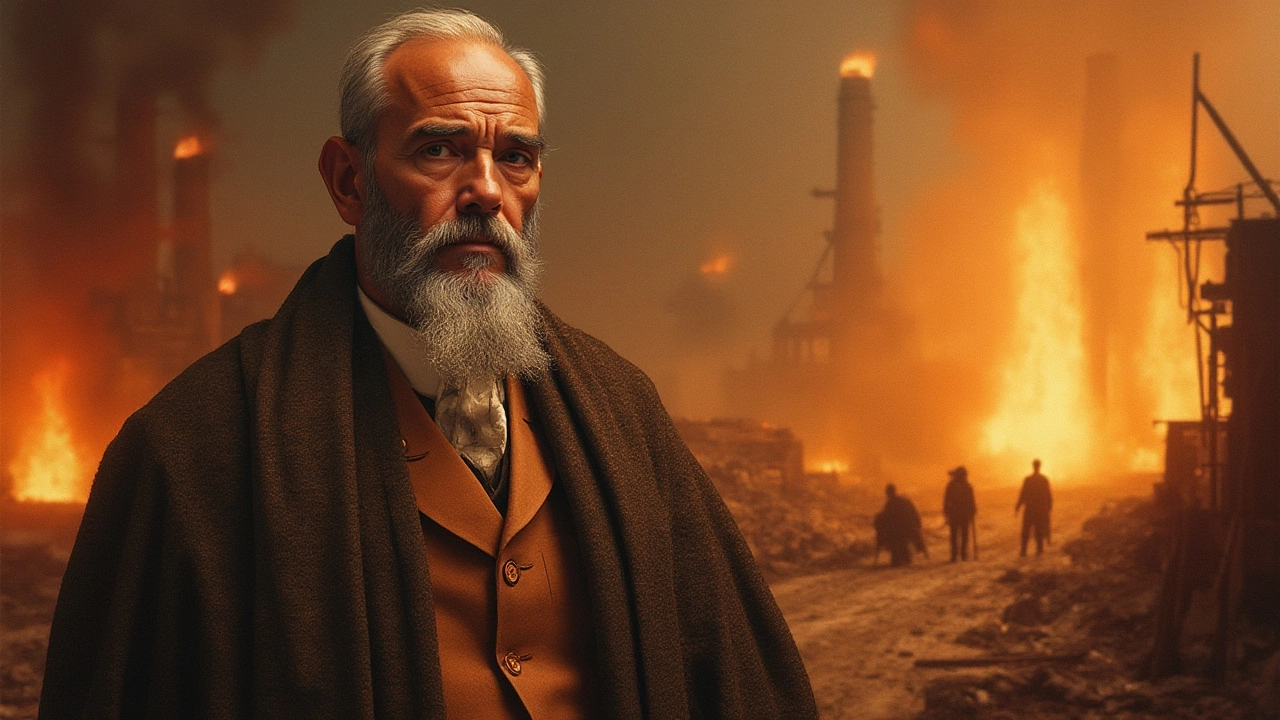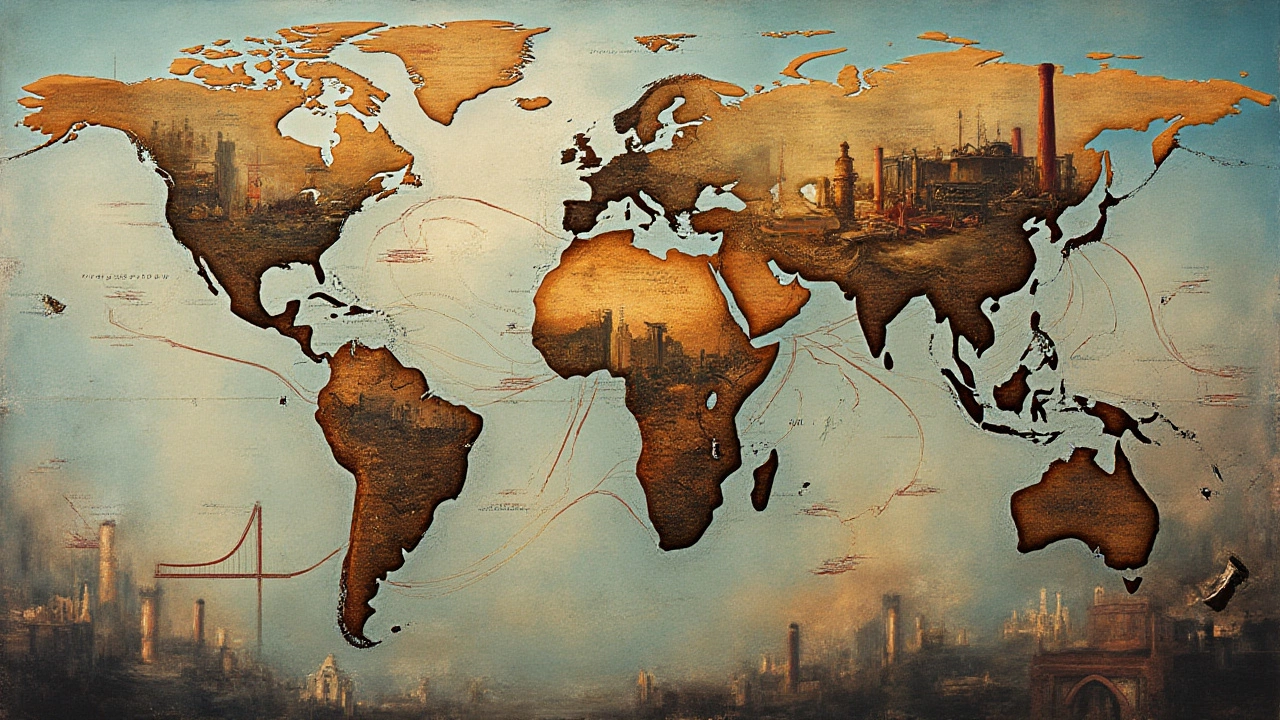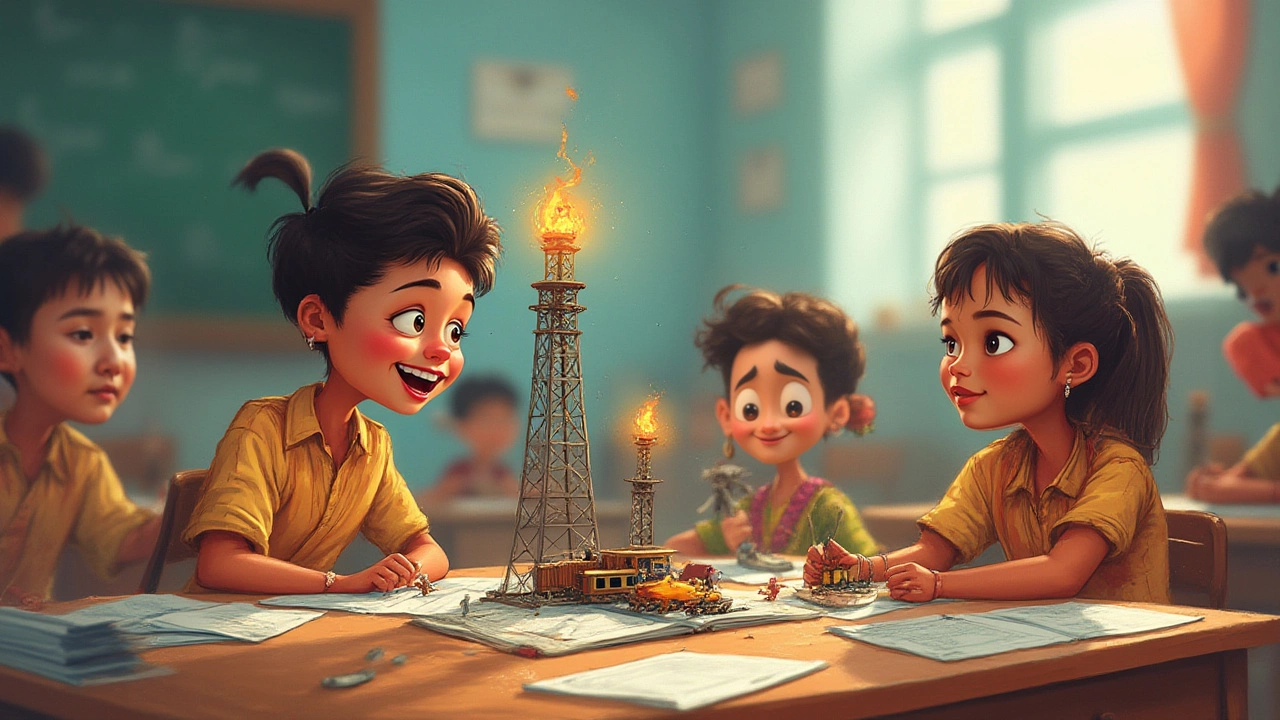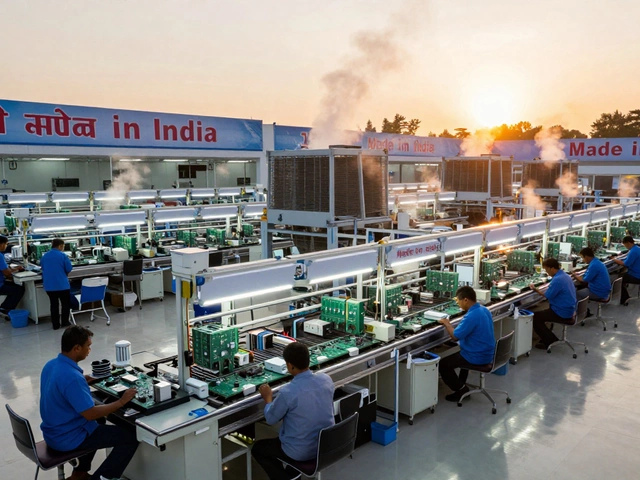Who is the King of Steel? Origin, Legacy & Untold Facts

Someone pulled off an unheard-of feat in the business world: they practically invented modern steel as we know it, then put half the planet’s cities on the fast track to the sky. Think thousand-ton bridges, epic skyscrapers, miles-long railways—none of it happens without this guy’s ambition (and probably some of his ruthless habits). His name? Andrew Carnegie. A name that still sets off fireworks when people talk about industrial legends.
Yet, the title “King of steel” isn't just about money. It’s about changing the game for everyone else, rewiring how whole economies work, and setting records that still stand tall today. But how did Andrew Carnegie, a low-income Scottish immigrant, become not just wealthy, but kind of the Steve Jobs—or dare I say, the Beyoncé—of the 19th-century steel world? There’s a wild story hiding behind that crown, and it’s bigger than school textbooks ever admitted.
How Andrew Carnegie Became the King of Steel
The classic rags-to-riches thing almost seems cliché—unless you’re Carnegie. The man was born in a tiny house in Dunfermline, Scotland. His family wasn’t just poor; they were almost bankrupt after economic disaster hit the country’s weaving industry. So, at age 13, Andrew crossed the Atlantic, landing in Pittsburgh with next to nothing.
He didn’t sit around feeling sorry for himself. Railroad telegraph boy, then a messenger, then a manager for the Pennsylvania Railroad by the time he was in his twenties. Here’s where he spotted a key move: he realized steel was going to change everything. Iron was old news; steel was way tougher, cheaper to make, and, with something called the Bessemer process, manufacturing it got much more efficient. Carnegie invested early, betting the farm on a risky, revolutionary way to make steel faster than anyone else. And, spoiler: he won.
By the 1870s, he owned the biggest steel company on Earth. The level of production was nuts for the time—a single Carnegie mill could spit out more steel than the entire nation of Britain. Talk about an upgrade. He built not just bridges, but trust (and competition) in using steel for everything from train tracks to warships. Before him, steel was a luxury. After him, it became the bones of the modern world.
“Carnegie’s steel empire fundamentally changed the urban landscape of America and made mass construction possible,” notes biographer David Nasaw in The Chief: The Life of William Randolph Hearst.
His reign wasn’t just about leading the pack. He forced others to raise their game, to innovate or get left in the dust. That’s why when people ask, “Who’s the king of steel?”, his name is the only one on everyone’s mind.
The Birth of Modern Steel: What Made Carnegie’s Method Different?
Let’s get real: you don’t become the king by doing things the same old way. Before Carnegie, steel-making was slow, unreliable, and eye-wateringly expensive. Steel cost more than gold, per ounce!
The Bessemer process changed all that. Think less “artisan blacksmith clinking metal over coals,” more “giant blast furnace spitting out glowing rivers of steel.” For the first time, people could force air through molten iron, burning out impurities fast and cheap. Carnegie was among the first in America to latch onto this, building massive Bessemer plants along the rivers of Pittsburgh. These weren’t just factories—they were production monsters. A single mill could produce 2,000 tons of steel a day at full throttle.
He didn’t stop there. Carnegie didn’t just sit in an office signing papers. He banged heads with his engineers—literally—pushing them to squeeze every minute, every dollar, out of the production line. The guy even invested in his own mines for ore and coal, set up railroads just for shipping, bought ships to move his own supplies. The goal: cut every cost possible, run it all like a high-speed machine. That’s how he could sell steel cheaper than rivals—sometimes below cost—to push them out, then raise prices after winning the game. Classic business king move.
- The Homestead Works, one of Carnegie’s biggest mills, covered 430 acres and employed over 5,000 workers at its peak.
- By 1900, U.S. steel output was nearly 11 million tons annually—up from less than 70,000 tons before the Bessemer revolution.
- Carnegie’s relentless innovation dropped steel prices from $100 per ton to below $20 in just a few decades.
The impact? Steel became so cheap and reliable that it ignited a building spree, setting off the Gilded Age’s construction boom. Cities shot skyward. Railways spidered across continents. Ships grew from wooden tubs to floating fortresses. And Carnegie was at the heart of it.

The Man Behind the Steel Crown: Ruthless Tactics, Philanthropy, and Legacy
Winning is never pretty, especially not for someone building empires. Carnegie ruled his “empire” tough—sometimes brutally so. The infamous Homestead Strike of 1892 is one of labor history’s nastiest episodes: workers protested for better pay, the management called in strikebreakers and armed guards, and it ended in blood and national outrage. Carnegie, though usually pro-worker in writing, still let his companies fight back hard. That kind of ruthlessness bought him massive profits but also scars on his reputation.
But the story flips after his steel days. When Carnegie sold his steel business to J.P. Morgan in 1901 for $480 million dollars (that’s more than $15 billion today), he turned to giving back. He poured most of his fortune into libraries, schools, peace funds—you name it. By the time he died in 1919, he’d given away over 90% of his fortune. Towns all over the U.S. still have a “Carnegie Library” on Main Street. Colleges and music halls still bear his name.
“No man becomes rich unless he enriches others,” Carnegie famously wrote in his essay, The Gospel of Wealth.
| Year | U.S. Steel Output (million tons) | Est. Annual Value (USD) |
|---|---|---|
| 1870 | 0.068 | $6.8 million |
| 1890 | 4.2 | $336 million |
| 1900 | 10.9 | $763 million |
There’s a reason the nickname stuck. Even though U.S. Steel—the merger that swallowed Carnegie Steel—became the first billion-dollar company in history, it was Carnegie’s vision that lit the fuse. His story is messy, complicated, but unavoidably huge.
Fun Facts, Myths, and Misconceptions About the King of Steel
People love to invent myths around big figures, and Carnegie is no different. For one, the guy wasn’t always rich. He started working at a cotton factory for $1.20 a week. Hardly king stuff, right?
Another weird tidbit: Carnegie used to say, “The man who dies thus rich dies disgraced.” That’s why he spent so much time and money building libraries and supporting causes. In fact, he gave away enough money to build over 2,500 libraries all over the globe—including places as far as Fiji and Mauritius.
Most people think he was the world’s richest man. Close, but not quite. John D. Rockefeller actually had a bigger fortune, thanks to oil. But in steel? Carnegie had no equal. His company at peak made more money than several countries put together back then!
- Carnegie famously offered a peace prize worth double the Nobel Prize’s value. Not many people know that.
- He once outbid city officials to fund the world-famous Carnegie Hall in New York after hearing they’d run out of cash for construction.
- His business letters were almost all written on tiny pieces of paper, so employees had to reply using fewer words—this saved both paper and time.
Some stories make him look saintly, others paint him as a cold-hearted boss. Honestly, like most historic powerhouses, he was probably both at different times. Either way, his legend as the King of steel rides high because he dared to think (and build) much, much bigger than anyone else around.

Steel’s Global Throne: Other Contenders and Modern Kings
Of course, Andrew Carnegie isn’t the last word in steel. These days, the title “king” has new faces. Take Lakshmi Mittal, the head of ArcelorMittal, which today is the world’s largest steel producer. The company churns out close to 90 million tons of steel every year—that’s far more than anything in Carnegie’s day, though the world is a lot bigger now.
China also owns a huge part of the story. In fact, half of all the world’s steel gets made there now. Names like Baowu Steel and Ansteel pop up when talking modern giants. These firms crank out thousands of tons an hour. But there’s a twist: they benefit from tech and systems that echo the changes Carnegie started 150 years ago. As of 2023, global crude steel production topped a staggering 1.9 billion tons, with China alone making over 1 billion tons. That’s almost 55% of global output in a single country!
If you zoom out, you see steel is still central to everything—cars, wind turbines, washing machines, stadiums. The crown passes hands, but whoever wears it follows tracks first laid by America’s original steel king.
Cheaper steel helps build cheaper homes, faster trains, cleaner energy tech. That’s why the legacy matters. Andrew Carnegie didn’t build the entire modern world, but he set the rules for those who would try. And even with today’s digital titans and tech giants, his story shows that with the right risk and vision, one person really can literally change what civilizations are made of.

